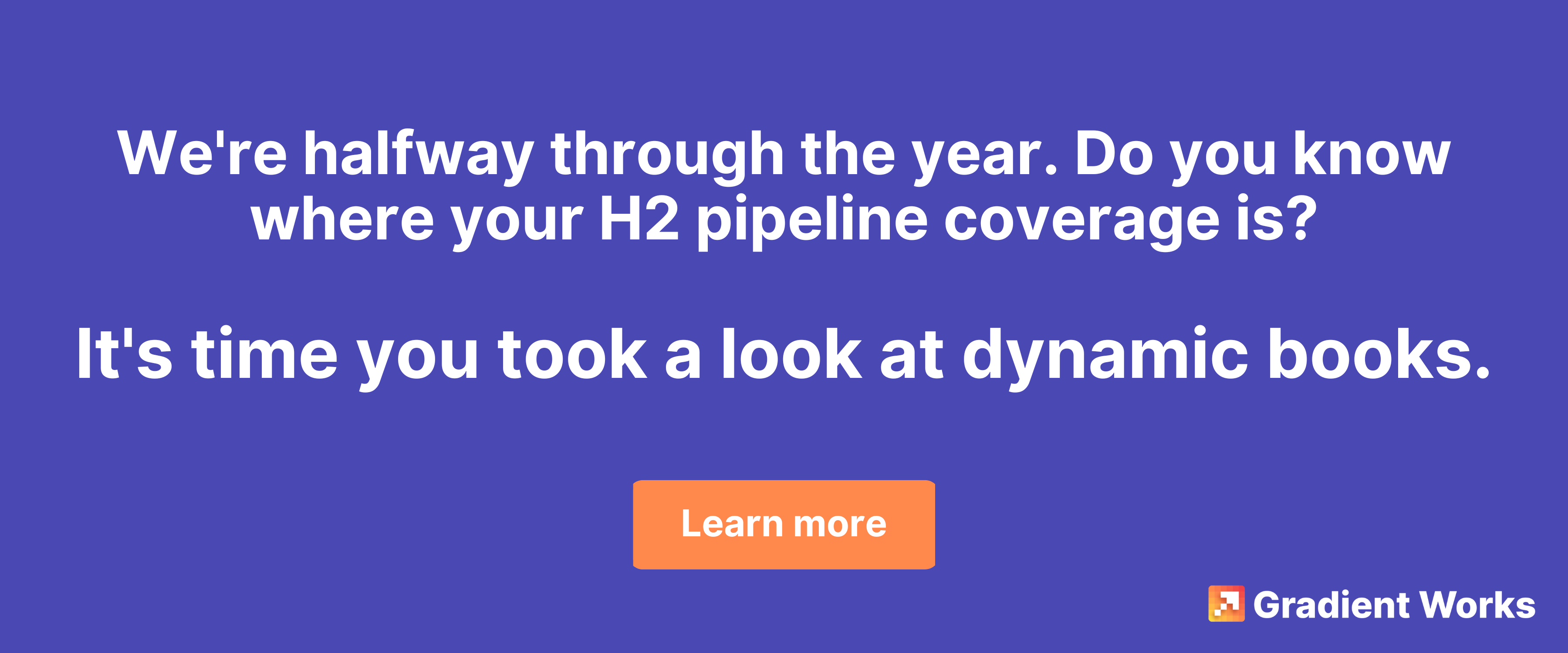Recently, our CEO Hayes Davis joined a webinar on adjusting GTM, annual plans mid-year.
It was a great discussion on how to adjust revenue plans with data, especially in years like 2023, where most of the assumptions we had last fall have not held true. Here are a few of the key takeaways from the webinar.
1. No matter what plan you come up with, it's going to be wrong. The margin for uncertainty has gotten really large recently. So the ability to adjust your plan and your resource levels is really critical.
2. The biggest mistake teams make is setting it and forgetting it. What we're calling territory planning really ought to be something that is less discrete and more continuous, more of a process. We need to build into the annual plan the understanding that there needs to be continuous adjustment and optimization.
3. If you're seeing not enough pipeline coverage, there's a good chance it's because there could be better accounts that your reps could be focusing on. And you've got to get those accounts in reps' hands. It is a huge lever that is really underutilized, especially mid-year, because people have locked themselves into a plan that's really, really hard to change.
4. You're effectively outsourcing the prioritization of those accounts to the reps, and you're locking them into a group of accounts based on assumptions you had in September of the previous year. And then you're saying, "Okay sellers, take all those assumptions and go figure out who to sell to now." And that's fundamentally unfair to reps. Why do reps leave their jobs? They'll cite a manager, compensation, and their territory. Because ultimately, those things are all related to them getting paid.
5. RevOps is a game of trying to understand leading indicators and how those tie into outcomes. Cuts are largely being made on lagging indicators, like missed bookings, churn was higher than you thought it was going to be, profitability is not where it's going to be. So the obligation is also to bring really deep insight into leading indicators.
6. It's agility, being able to dynamically adapt to what's going on. So whether you're doing full readjustments or smaller tweaks, the key is that you can iterate and put those things in place quickly. And that you have the data to support whatever decisions you're you're making.
You can watch the webinar on-demand here.





